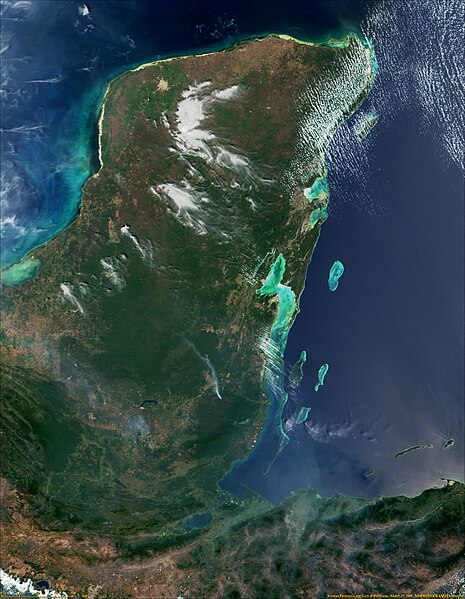A kuchkabal was a system of social and political organisation common to Maya polities of the Yucatán Peninsula, in the Maya Lowlands, during the Mesoamerican Postclassic. There were somewhere between 16 and 24 such provinces just prior to the Spanish conquest of Yucatán.
Sea coast village / pre-Columbian fresco in the Temple of Warriors, Chichen Itza / 1931 reproduction by Ann A. Morris / via HathiTrust
Nemecio Xiu (centre) and his family / Fig. 18 in Roys 1943 / via HathiTrust
Spanish conquest of Yucatán
The Spanish conquest of Yucatán was the campaign undertaken by the Spanish conquistadores against the Late Postclassic Maya states and polities in the Yucatán Peninsula, a vast limestone plain covering south-eastern Mexico, northern Guatemala, and all of Belize. The Spanish conquest of the Yucatán Peninsula was hindered by its politically fragmented state. The Spanish engaged in a strategy of concentrating native populations in newly founded colonial towns. Native resistance to the new nucleated settlements took the form of the flight into inaccessible regions such as the forest or joining neighbouring Maya groups that had not yet submitted to the Spanish. Among the Maya, ambush was a favoured tactic. Spanish weaponry included broadswords, rapiers, lances, pikes, halberds, crossbows, matchlocks, and light artillery. Maya warriors fought with flint-tipped spears, bows and arrows and stones, and wore padded cotton armour to protect themselves. The Spanish introduced a number of Old World diseases previously unknown in the Americas, initiating devastating plagues that swept through the native populations.

Satellite view of the Yucatán Peninsula
European-introduced smallpox devastated the indigenous populations of the Americas
Bartholomew Columbus came across a Yucatec Maya canoe in the Gulf of Honduras
Francisco Hernández de Córdoba






